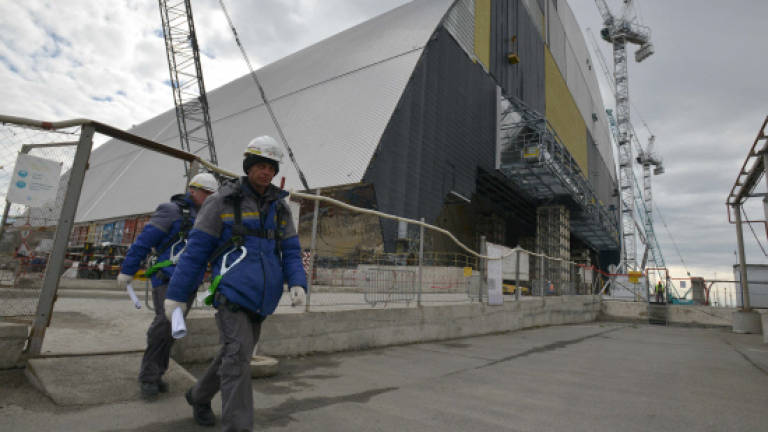30 years on, Chernobyl worker remembers the aftermath

IGOR Magala can still remember the metallic taste he got in his mouth as he drove up to the Chernobyl nuclear power station on the morning of April 26, 1986.
The night before, Magala — the deputy construction boss at the plant — had received a phone call telling him there had been an accident and summoning him in to help, but he had few other details.
Now as he approached the area he found it crawling with soldiers.
"At the beginning there was no information at all — everything back then was classified as secret," Magala, now 78, told AFP as he stood in the main square of his hometown just outside the Ukrainian capital, Kiev.
"I thought that I was coming for a week, but it turned out that I had to stay there a year."
Magala did not know at the time, but several hours earlier the plant's reactor number four — which he had helped to build — had exploded during a safety test.
While the Soviet authorities were desperately trying to prevent news of the catastrophe leaking, clouds of poisonous radiation were already spewing out — and the reactor itself was glowing.
"There was a red pillar of light and at night it was especially visible," Magala said. "It shone red for several days."
Threat of another blast
Magala was one of the very first of some 600,000 people who became known as "liquidators" — mostly soldiers, police, firefighters and state employees — dispatched by Moscow over the next few years to try to clean up the fall-out.
"There was no protective gear — that all came later," Magala said. "There was just a sense of duty."
For those working at the site in the immediate aftermath of the disaster there were more pressing concerns.
Experts worried that radioactive material could leak into a safety pool under the reactor and cause a second, more powerful explosion that would threaten the millions of people living in Kiev, some 100 kilometres to the south.
That May, Magala and 10 other volunteers were handed the task of using special equipment to drill through the two-metre thick wall of the safety pool to check.
After working for four days the team were relieved to find that their worst fears were unfounded.
"When we cut the hole through it turned out that it was all quiet, peaceful and calm there," Magala said.
"We did not need to evacuate Kiev."
'Dying like flies'
Thirty years later, Magala walks with a stick but says he has not suffered serious health problems from the aftermath of Chernobyl.
That, he concedes, makes him one of the lucky ones.
"People that we called 'partisans' arrived — kids who were mobilised by the army. They gave them a helmet and a lead apron," Magala said.
"Five year later these soldiers began dying like flies."
He reserves the greatest respect for those who took the worst risk by clearing radioactive graphite from the roof of the damaged reactor before radio-controlled bulldozers buried it in the earth below.
Their electrical equipment kept breaking down because of the radiation.
"The firefighters bore the brunt of that first wave," Magala said.
"The equipment stopped working, but the people stood firm." — AFP